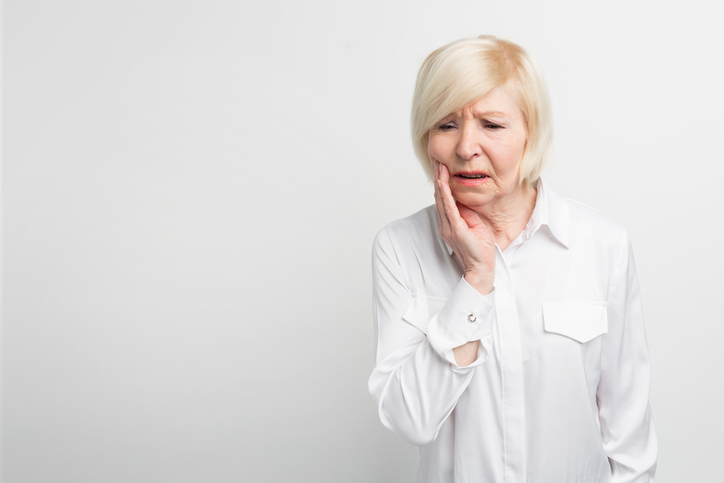The critical piece information to orthodondist, prosthodontist, periodontist, and general dentistry is the loss bone in TMD can & will affect the occlusion.
Symptoms of Severe Damage TMD include:
Progression of damage for osteoarthritis
Hints of severe damage-history include:
A general dentist should never accept the challenge to treat severe damage TMD cases. Even if the patient is long standing pillar of community who demands you treat him/her.
Goals Chewing system Orthopedics in OA:
Confirm Stability of Chewing system:
CHEWING SYSTEM ORTHOPEDICS TEAM:
Secondary symptoms: OA in TMD
OA Confusions
REFFERRAL OROFACIAL SPECIALIST:
YOUR DISCOVERY IN TX PROCESS
Muscles are over recruited from multiple sources overloading joint and pulling & tearing lateral ligament of TMD disc displacing disc in anterior medial direction until disc totally lost and condyle overloads retrodiscal tissue causing perforation in tissue, allowing bone on bone contact. Now, we lose bone until we lose height bone and loss joint space loading posterior tooth same side. The following are muscle recruiters:
Moderate-severe damage in TMD causes bite changes:
It is the best interest of patient that we serve science not sales !
Diagnostic tree for atypical toothache: so if it is not inside nerve, the patient needs a diagnostic clearinghouse for the other 6 causes of toothache, some are medical and some dental.
Surgery for severe damage TMD: TYPES:
Restricted Opening can occur in Osteoarthritis, Low prevalence due OA low statistics, can have mild to severe pain, can be associated w/ bite changes, temple HA, ear pain.
Restricted opening means Urgent referral by dentist, hygienist, PCP, rheumatologist, ENT, PT, Biofeedback, periodontist, endodontist, anesthesiologist, rheumatologist to orofacial pain specialist increase chance of healing and improve eating ability.
Bone loss in TMD:
TMD symptoms predominantly develop within 5 years of symptoms in major joints of body.
This makes early recognition of pain & inflammation in TMD important for enabling Rheumatologist to refer to Orofacial Pain Specialist for early treatment and prevention of irreversible damage in chewing system.
Symptoms of synovial inflammation-cartilage & bone destruction is same for RH as OA
The critical piece information to orthodondist, prosthodontist, periodontist, and general dentistry is the loss bone in TMD can & will affect the occlusion.
Symptoms of Severe Damage TMD include:
Progression of damage for osteoarthritis
Hints of severe damage-history include:
A general dentist should never accept the challenge to treat severe damage TMD cases. Even if the patient is long standing pillar of community who demands you treat him/her.
Goals Chewing system Orthopedics in OA:
Confirm Stability of Chewing system:
CHEWING SYSTEM ORTHOPEDICS TEAM:
Secondary symptoms: OA in TMD
OA Confusions
REFFERRAL OROFACIAL SPECIALIST:
YOUR DISCOVERY IN TX PROCESS
Muscles are over recruited from multiple sources overloading joint and pulling & tearing lateral ligament of TMD disc displacing disc in anterior medial direction until disc totally lost and condyle overloads retrodiscal tissue causing perforation in tissue, allowing bone on bone contact. Now, we lose bone until we lose height bone and loss joint space loading posterior tooth same side. The following are muscle recruiters:
Moderate-severe damage in TMD causes bite changes:
It is the best interest of patient that we serve science not sales !
Diagnostic tree for atypical toothache: so if it is not inside nerve, the patient needs a diagnostic clearinghouse for the other 6 causes of toothache, some are medical and some dental.
Surgery for severe damage TMD: TYPES:
Restricted Opening can occur in Osteoarthritis, Low prevalence due OA low statistics, can have mild to severe pain, can be associated w/ bite changes, temple HA, ear pain.
Restricted opening means Urgent referral by dentist, hygienist, PCP, rheumatologist, ENT, PT, Biofeedback, periodontist, endodontist, anesthesiologist, rheumatologist to orofacial pain specialist increase chance of healing and improve eating ability.
Bone loss in TMD:
TMD symptoms predominantly develop within 5 years of symptoms in major joints of body.
This makes early recognition of pain & inflammation in TMD important for enabling Rheumatologist to refer to Orofacial Pain Specialist for early treatment and prevention of irreversible damage in chewing system.
Symptoms of synovial inflammation-cartilage & bone destruction is same for RH as OA

Grinding enlarges Medical Pterygoid which reduces pipe size on both sides of air pipe increasing chance of having Sleep Apnea
 Raleigh Facial Pain © 2025 All Rights Reserved.
Raleigh Facial Pain © 2025 All Rights Reserved.